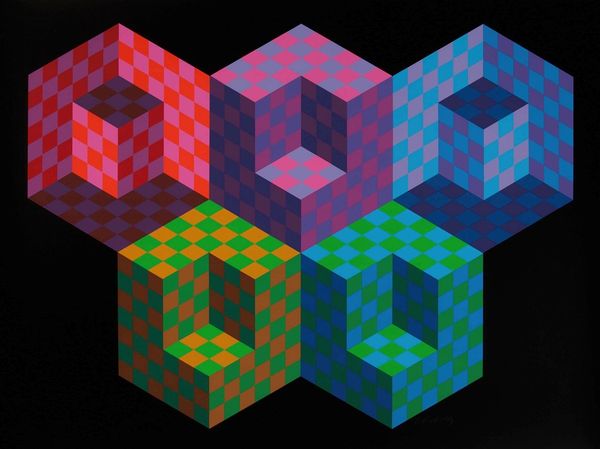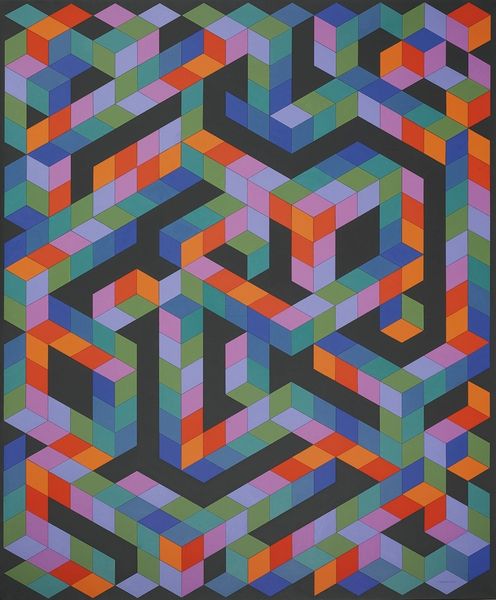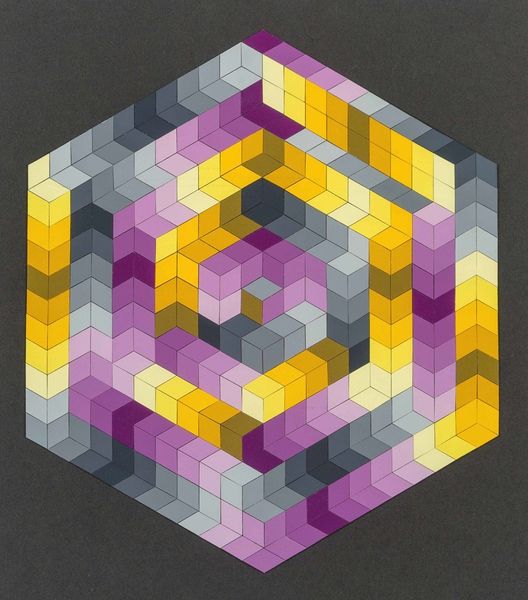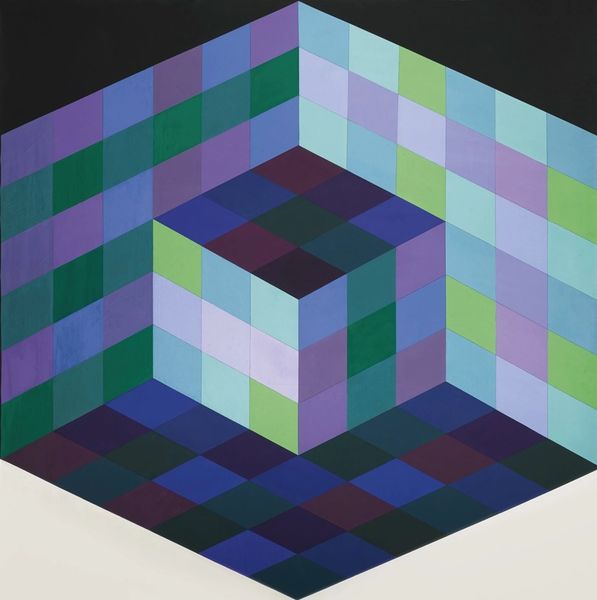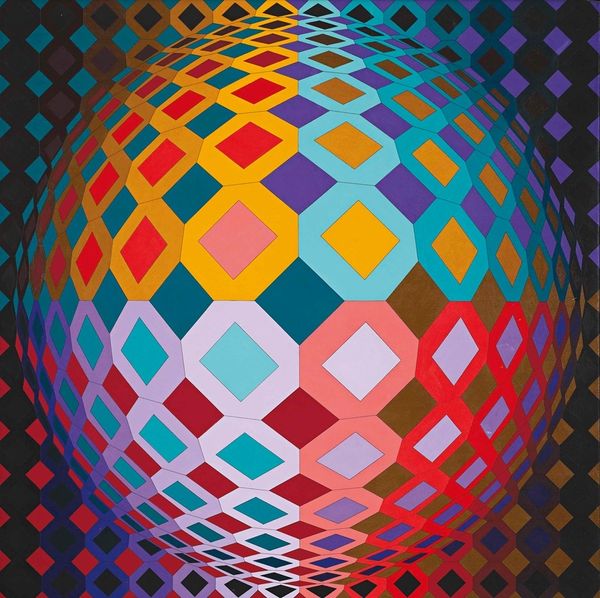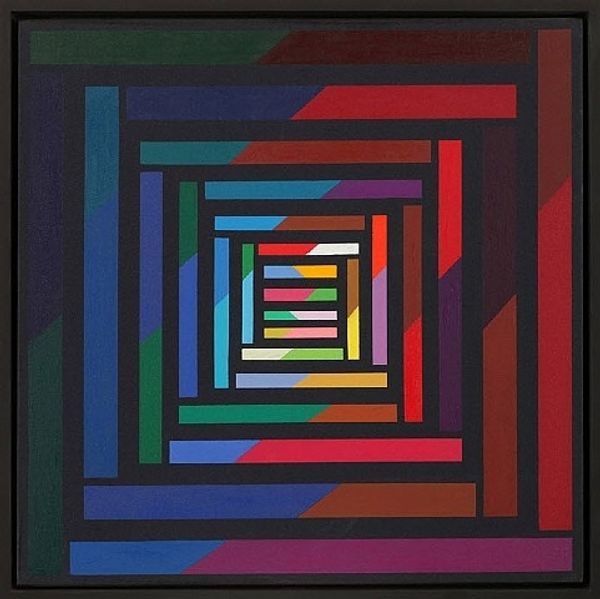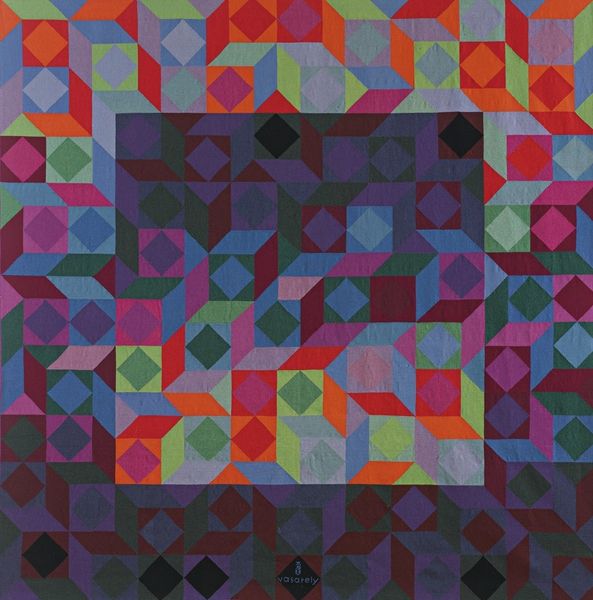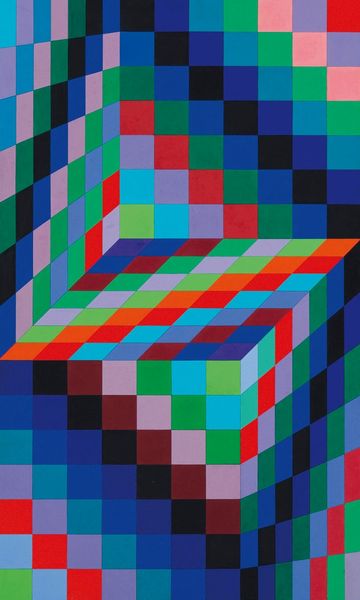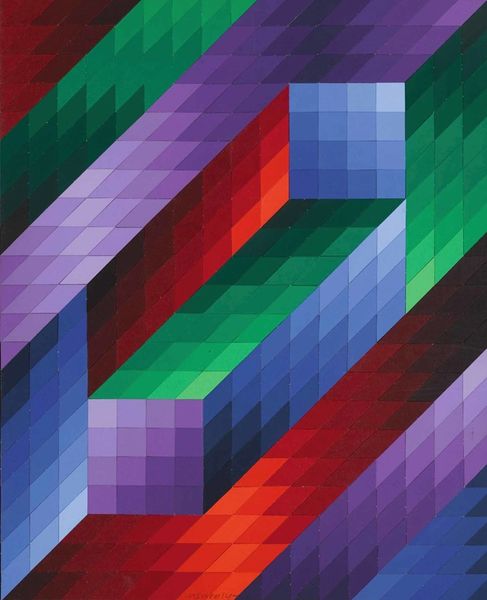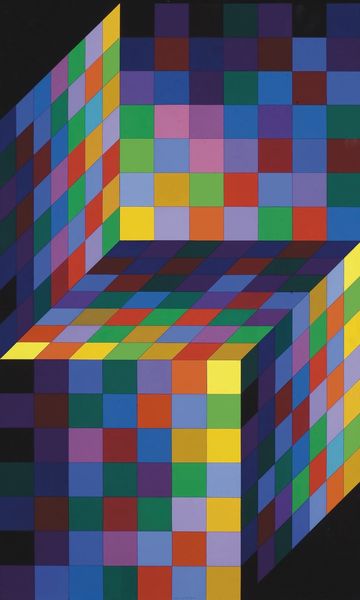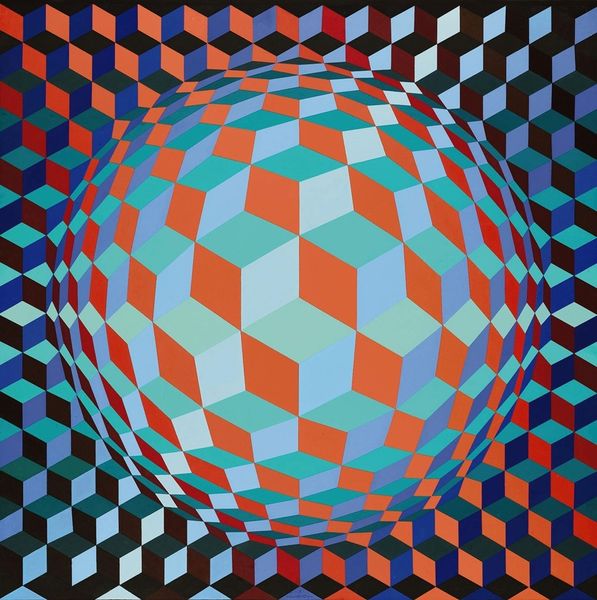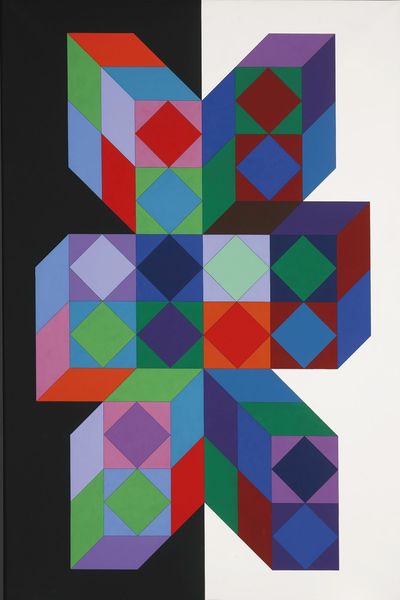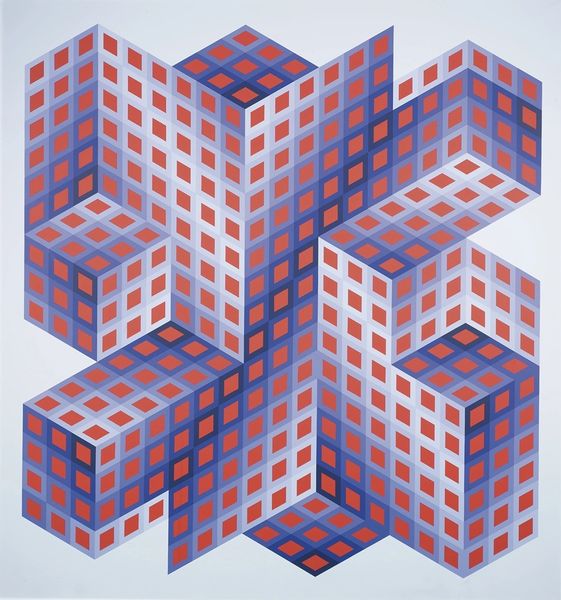
painting, acrylic-paint
#
op-art
#
painting
#
acrylic-paint
#
abstract
#
geometric pattern
#
geometric
#
abstraction
#
modernism
#
hard-edge-painting
Copyright: Modern Artists: Artvee
Curator: Looking at this piece, my first reaction is that my eyes don't quite know where to focus. The optical illusion really messes with my perception! Editor: Yes, it vibrates, doesn't it? We're viewing "Goeth 1127" by Victor Vasarely, from 1975, an acrylic on canvas. Right away you notice Vasarely's dedication to geometric abstraction and hard-edge painting, typical of Op Art. What interests me most is his method, the meticulous application of these square units of pure pigment. Curator: Method is key here. Vasarely aimed to democratize art. His pieces, like this one, could be serially produced, making art accessible beyond elite circles. It shifts the value from the artist’s singular touch to the concept itself, almost like product design. Editor: Exactly, this challenges the traditional hierarchy. The "hand" recedes as labor. He industrializes the artistic process itself, mirroring contemporary modes of production. Think of textile design or tiled mosaics... crafts traditionally seen as less "fine". Curator: I'm curious if that resonates with its initial audiences, though. Did the public embrace this “art for the masses," or did it remain a niche interest due to its visual complexity and association with a certain intellectual sphere? Editor: Good point. The imagery got reproduced endlessly but, was this labor respected, and who ultimately benefited from its reach? Curator: Right. Consider too how galleries and museums then positioned his work – was it presented as high art, therefore re-complicating that notion of accessibility? The market forces are fascinating here. Editor: Indeed, so we’re left wondering: does the application of material generate a visual experience with lasting impact, or it is a commodified object detached from the making process? Curator: A lot to unpack! "Goeth 1127" throws light on crucial discussions regarding production, accessibility, and the function of art in a consumerist society. Editor: And it compels us to reflect on not just what we're seeing, but how it was meticulously constructed and where it sits within the art historical canon.
Comments
No comments
Be the first to comment and join the conversation on the ultimate creative platform.
